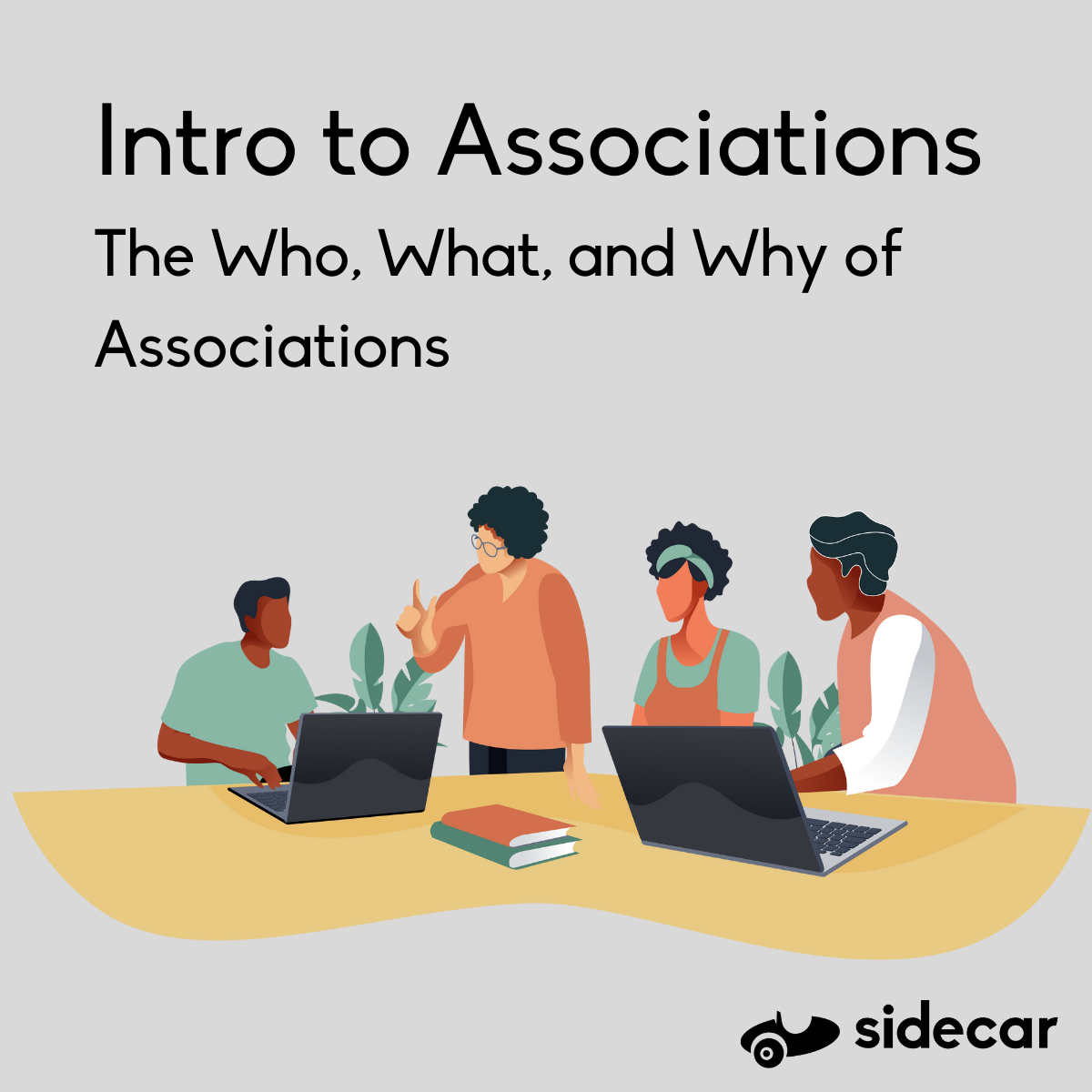The association world is an eclectic industry filled with organizations of all shapes and sizes, in just about every industry and with different goals and focuses. However, most organizations often fall into one of three categories – professional, trade and social.
In our second association newcomer post, we’ll dive into these different types of associations and how to identify which one you might have just joined! And if you’re new here, be sure to start with our first piece in this series, “What is an association?”
The Three Types of Associations
An important distinction among associations is the type of organization they fall into. While there is some overlap in terms of goals and structures, associations often fall into one of three categories.
1. Professional Organizations
Often referred to as professional societies, these types of organizations are focused on specific industries, like medicine or law, and are designed to empower their specific members. They often add value by creating educational content or professional development programs and are focused on empowering members to provide the best service possible to their customer base.
They also often have at least one annual meeting or networking event that allows them to discuss new innovations while also bringing keynote speakers to the forefront of their industry.
- The American Bar Association – Promotes high-quality legal education and sets the standard for ethical conduct among attorneys. Members also gain access to CLE webinars and programs that are required to retain good standing.
2. Trade Associations
While these associations are still focused on providing value to their members, their membership base is comprised of organizations, as opposed to individual people. These associations tend to focus on lightning rods in their industry, putting their resources behind moving the needle on a structural level.
They do this by focusing on things like advocating for or enacting legislation, setting industry standards and conducting research that can impact the industry as a whole. While they do have some professional development opportunities, their main focus is enacting change for the good of the industry.
- Outdoor Industry Association – With over $1.5 million in funding and representing an industry with over 4.3 million jobs in 2020, OIA helps set the standard for the outdoor industry. It advocated for the passage of the REC Act and created the Higg Index, which helps retailers to measure sustainability performance.
3. Social Organizations
Social organizations make up the smallest segment of association land and generally include clubs, enthusiast groups and fraternal organizations. While they represent a small portion of the industry, there are thousands of them out there with membership often organized into chapters or region-specific groups.
Because of their local prevalence, they are often more community-oriented and do things like volunteering and coordinating social gatherings.
- Kiwanis Club – Founded in 1915, Kiwanis International has focused on serving children in need. They have completed over 12 million hours of service each year to help their local communities.
Where can you find associations?
One unique way to distinguish or classify associations is based on their location. Many organizations are based in Washington, Chicago and the New York City area because of their proximity to the industries they impact.
For example, the D.C.-area is home to a vast majority of trade associations. Why? Because their goal is to enact policy and lobby for standardization, which means they need to be close to where legislation happens. And the same can be said for any industry.
For example, if you are looking for a group related to the film industry, where would it be located? Los Angeles of course, and that is the home of the Motion Picture Association of America.
While this is not a hard and fast rule, associations are often found near state capitals or major cities, giving them easier access to the industries they affect.
What you need to know
So, as you look to identify what type of association you’ve joined, think about its purpose.
Are you creating educational content and hosting events for professional development? Chances are you’re a part of a professional organization. Are you trying to enact policy or lobbying for a certain standardization? Then you might be in a trade association.
Regardless of what industry you’re in and what your organizational goal might be, the one constant is that associations are purpose-focused organizations looking to improve the lives of their members and the communities they serve.
In our next post, we’ll discuss the structures of associations and give you the insights you need to continue your career journey! Looking for more ways to level up your association knowledge? Be sure to take our full course for association newcomers.

Intro to Associations
The association world is an eclectic industry filled with organizations of all shapes and sizes, in just about every industry and with different goals and focuses. However, most organizations often...
Download Now

February 22, 2022


